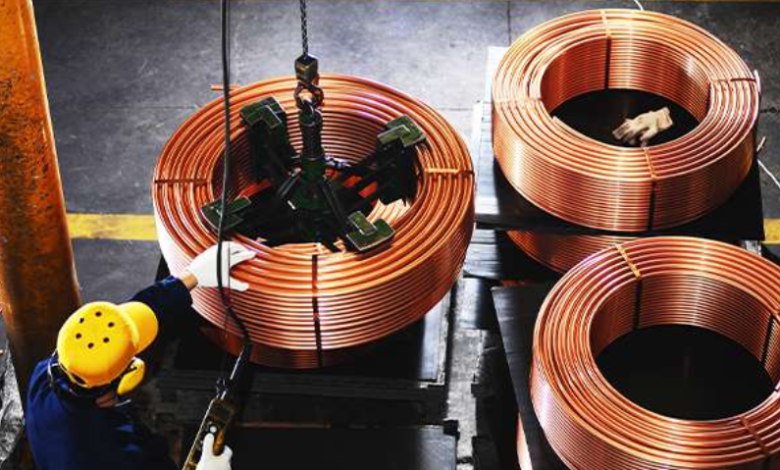Copper Investing Strategies for Sustainable Portfolio Growth

Copper investing offers a practical way to diversify a portfolio with exposure to an essential industrial metal. It plays a critical role in electronics, construction, and the energy transition, making it a relevant asset amid global demand and evolving technologies. Investors can gain exposure to copper through various means, including physical copper, stocks, ETFs, futures, and options, each with distinct risks and benefits.
Market conditions in 2025 show tight supply and strong demand, contributing to rising copper prices and making copper investments more attractive. Mining stocks and ETFs listed in key markets provide accessible options for those looking to invest without handling the metal directly.
Understanding these investment methods and the current market context helps investors make informed decisions on how to add copper effectively to their portfolios. The choice depends on their risk tolerance, investment timeline, and market outlook.
Fundamentals of Copper Investing
Copper’s value is shaped by supply and demand, investment options, and market risks. Understanding these factors is essential for making informed decisions and managing exposure effectively.
Market Drivers and Demand
Copper demand is strongly influenced by industrial development, especially in construction, electronics, and renewable energy. The growth in electric vehicles (EVs) has increased copper use due to its conductivity and durability. Infrastructure projects and urbanization, particularly in Asia and South America, also drive long-term demand.
On the supply side, copper production is concentrated in regions like Chile and Peru, exposing the market to geopolitical and environmental risks. Additionally, global economic growth and inflation influence copper prices, as the metal often acts as an economic indicator. The balance between demand growth and supply limitations creates price volatility.
Types of Copper Investment Options
Investors can gain exposure to copper through multiple channels:
- Physical Copper: Buying actual copper metal, often less liquid and requiring storage.
- Copper Mining Stocks: Shares in companies that mine copper; influenced by company performance and broader market conditions.
- ETFs (Exchange-Traded Funds): These track copper prices or mining companies, offering diversified, liquid exposure.
- Futures Contracts: Agreements to buy or sell copper at a set price on a future date, suitable for more experienced investors.
Each option carries different levels of risk, liquidity, and management complexity, catering to varied investment goals.
Risks and Volatility Factors
Copper prices are subject to fluctuations due to geopolitical tensions in key mining countries and changes in trade policies. Supply disruptions from strikes, environmental regulations, or natural disasters can impact availability.
Demand shifts caused by changes in economic cycles or technological trends also affect prices. Additionally, currency fluctuations and speculative trading contribute to volatility. Investors should consider these factors alongside their risk tolerance and investment horizon, as copper markets can be more volatile than traditional stocks or bonds.
See also: The Future of Text to Image Technology in Visual Media
Strategies and Considerations for Copper Investors
Investors should focus on building a balanced exposure to copper by combining different assets and analyzing company fundamentals. Timing market entry and exit also plays a crucial role in maximizing returns and managing risks.
Portfolio Diversification with Copper
Including copper in a portfolio can reduce risk by diversifying across sectors and asset types. Investors typically allocate 5-10% of their portfolio to copper-related assets depending on risk tolerance.
Popular vehicles include ETFs, physical copper, copper futures, and mining stocks. ETFs offer broad market exposure and liquidity, while physical copper provides direct commodity ownership but requires secure storage. Futures allow speculation on price movements but carry higher risk due to leverage.
Balancing these options aligns with investment goals. For example, combining stable mining stocks with speculative futures positions creates a core-satellite structure, blending steady cash flow with growth potential.
Evaluating Copper Mining Stocks
When selecting copper mining stocks, it’s critical to assess company financial health. Look for firms with robust balance sheets, low debt, and consistent cash generation.
Other key factors include production capacity, geographic diversification of mines, and operational efficiency. Companies with diversified assets face less disruption from regional political risks and supply constraints.
Past performance matters; firms with steady production and cost control are usually better positioned to weather price volatility. Reviewing management quality and long-term strategic plans also supports better decisions.
Timing and Entry Points
Copper prices fluctuate with global economic cycles, supply-demand shifts, and geopolitical events. Investors should monitor macroeconomic indicators like industrial output, infrastructure spending, and electric vehicle adoption rates.
Entering positions during price dips caused by temporary disruptions often offers better returns. Conversely, peak price periods may present opportunities to realize gains or rebalance portfolios.
Using technical analysis alongside fundamental trends can help identify optimal entry points. Patience and discipline are important, as copper markets can remain volatile amid evolving global demand and supply challenges.





